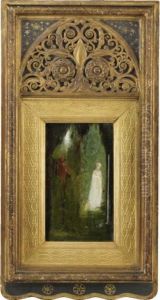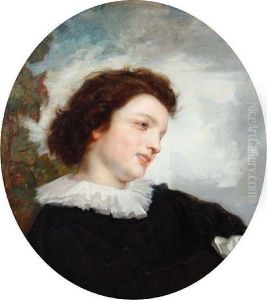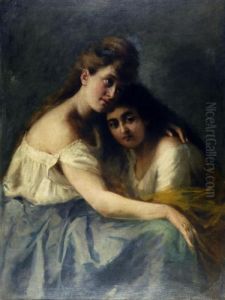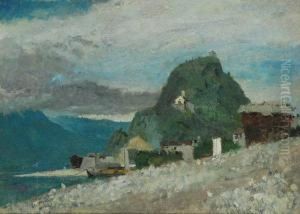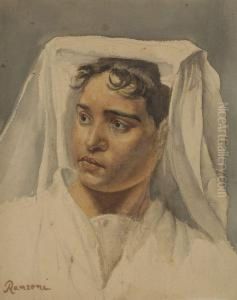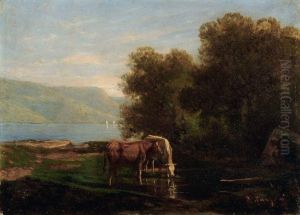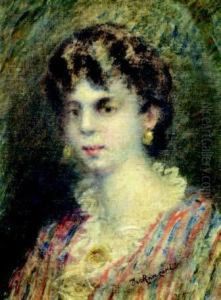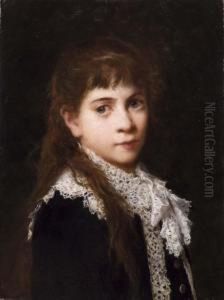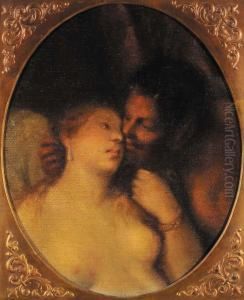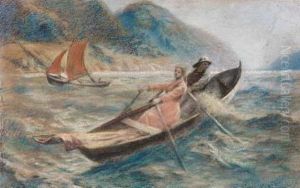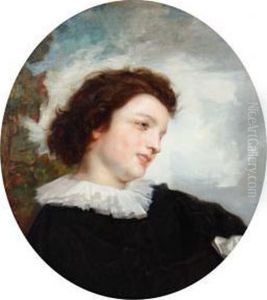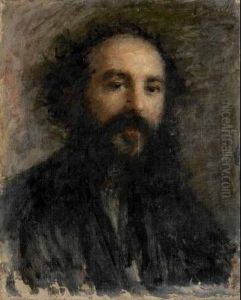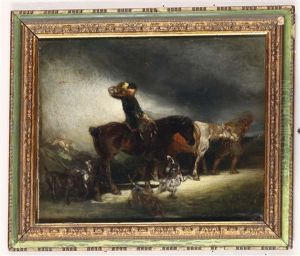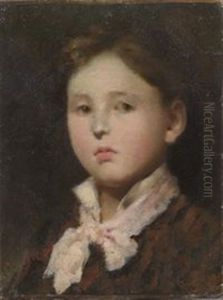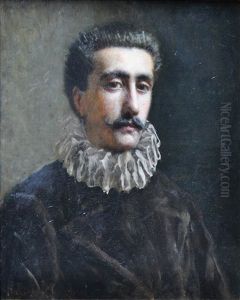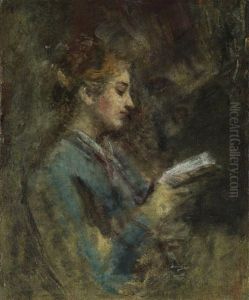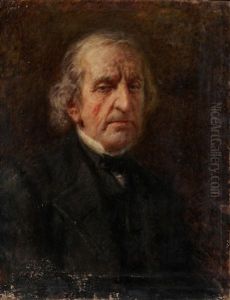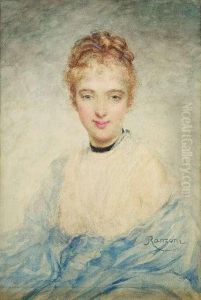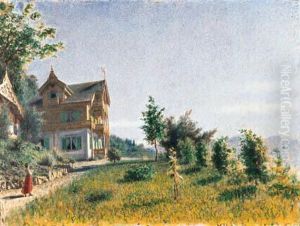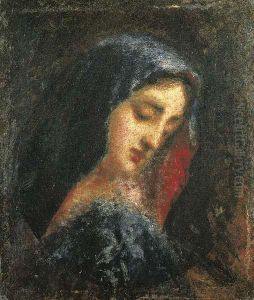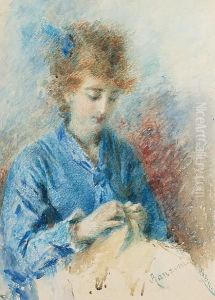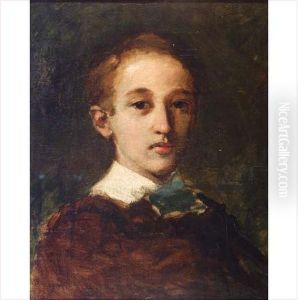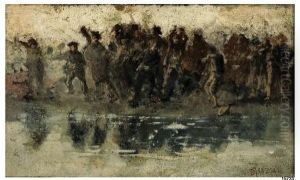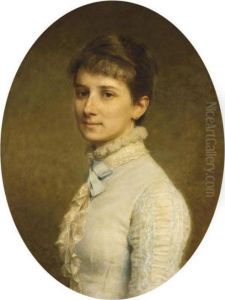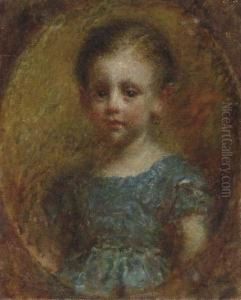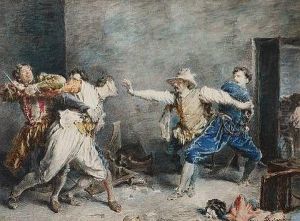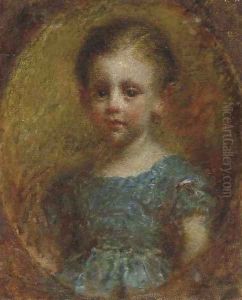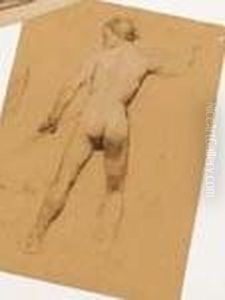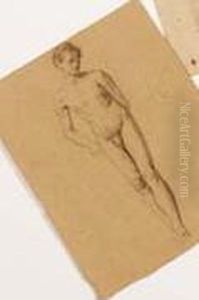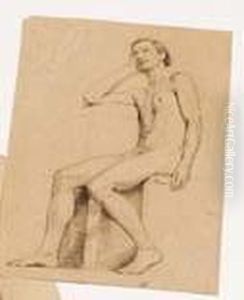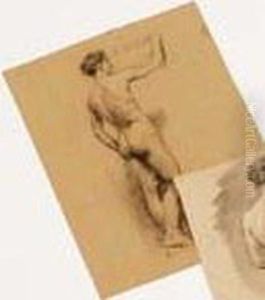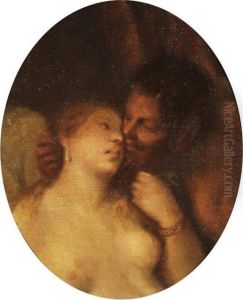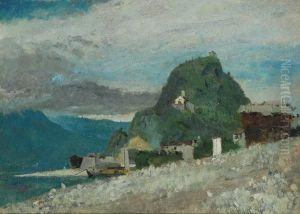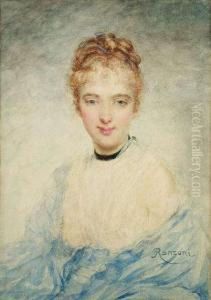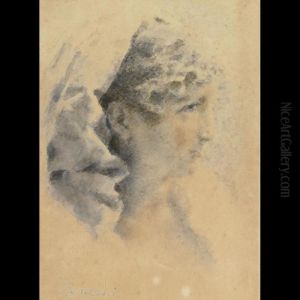Daniele Ranzoni Paintings
Daniele Ranzoni was an Italian painter, born in 1843 in Intra, now part of Verbania, near Lake Maggiore in the Piedmont region of Italy. He is considered one of the most significant artists of the Scapigliatura movement, an Italian artistic and literary movement of the 19th century that sought to shake the Italian art world from its traditional moorings, embracing a more bohemian lifestyle and emphasizing the importance of innovation and experimentation in art, literature, and music. Ranzoni's work, characterized by its emotional depth, technical skill, and innovative use of color, made him a pivotal figure in the transition from traditional to modern art in Italy.
Ranzoni's artistic journey began at the Brera Academy in Milan, where he studied under the guidance of Giuseppe Bertini, a well-known painter and teacher of the time. His early works were influenced by the Romanticism of Francesco Hayez, but Ranzoni quickly developed his unique style, which incorporated the realism of everyday life and the emotive use of light and color. He became an integral part of the Scapigliatura movement, alongside other notable figures such as Tranquillo Cremona and Emilio Longoni, pushing the boundaries of Italian art towards modernism.
Throughout his career, Ranzoni was acclaimed for his portraits and landscapes, which were marked by a distinctive sensitivity to the moods and subtleties of his subjects. His paintings often depicted scenes of rural and urban life, capturing the changing Italian landscape of the late 19th century. He was particularly adept at portraying the nuances of light, which he used to evoke mood and atmosphere, making his works highly sought after by collectors and critics alike.
Despite his success, Ranzoni's life was marked by ill health, and he died prematurely in 1889 at the age of 46. His death was a significant loss to the Italian art world, but his legacy lived on. Ranzoni's approach to painting and his commitment to capturing the essence of his subjects helped to lay the groundwork for future generations of Italian artists. Today, his works are preserved in various museums and collections throughout Italy, serving as a testament to his artistic achievements and his role in the evolution of Italian art from the 19th to the 20th century.
